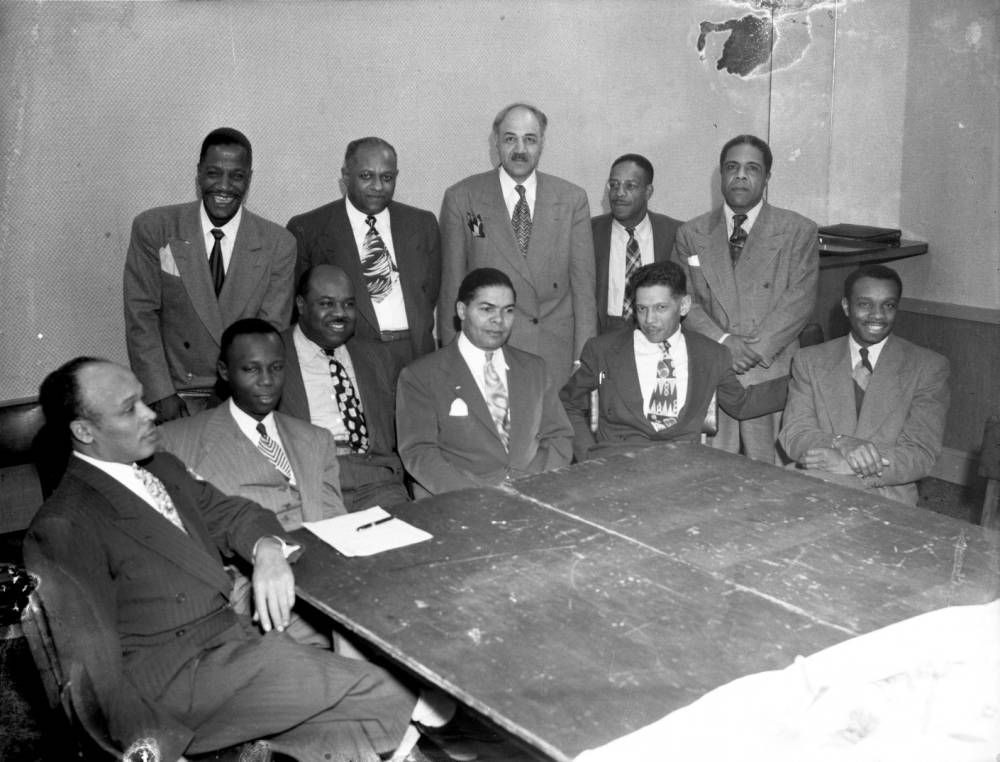December 11, 2018
James Tapley Wardlaw arrived in Minneapolis in 1944. The young sociologist had an education, a job and social connections. But he could not find a home.
Minneapolis was in the grips of an epic housing crisis. But Wardlaw's predicament was not due to a "scarcity of supply" nor a lack of income. It was institutional racism that kept him from finding a place to put down roots.
Wardlaw was the new executive director of the Minneapolis Urban League, a national civil rights organization. After taking the reins of the organization's local chapter, he posed for this photo with an array of African-American civic leaders. He was second from the right, in the bottom row, flanked by other men active in civil rights. Seated directly right of Wardlaw, is labor leader and entrepreneur, A.B. Cassius.
The newcomer to Minneapolis was stymied by what he described as a conspiracy to create "racially segregated slum districts" in the city. It seems "preposterous," he told readers of the Minneapolis Star, that this "could be a part of a deliberate plan, yet this is true."
Our map of racial covenants illuminates the "deliberate plan" so obvious to Wardlaw. By the 1940s, racially-restrictive deeds had been in use for 30 years. These legal instruments transformed a once integrated city into a community with hard racial boundaries.
When he tried to rent "outside the designated area," Wardlaw met rejections from property managers and real estate agents, who brandished racial covenants. These "are the tools used to depress homeownership among Negroes," he explained. "These are the practices which during the past decade have come to be regarded as expedient and profitable. These are also the practices which if endured for another decade will reap for Minneapolis a sorry harvest."
This warning from the young sociologist seemed to fall on deaf ears. Covenants remained legal in Minneapolis for another decade. After World War II, the city orchestrated a massive study of its racial climate. This social experiment brought it plaudits from around the country. But it did not dislodge covenants, which had spread across the city and were seen as critical to property values.
Today we are living with the legacies of these practices. How would our city look today if leaders had read Wardlaw's words and taken action?
Quotes are from J.T. Wardlaw, "Real Estate and Prejudice," The Minneapolis Star, December 23, 1944.
Photo taken by John Glanton, who documented the African-American community in Minnesota in the 1940s. For more images from Glanton see Double Exposure: Images of Black Minnesota in the 1940s (Minnesota Historical Society Press, 2018). Thanks to the children of John Glanton and the Hennepin County Library, Minneapolis, MN.

Photo credit: the children of John Glanton and the Hennepin County Library, Minneapolis, MN.

Photo credit: The Minneapolis Star, December 23, 1944.